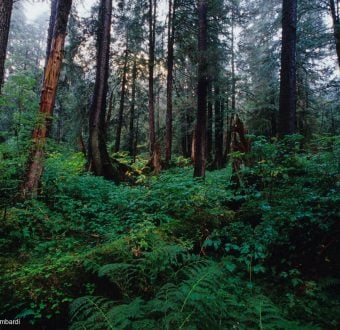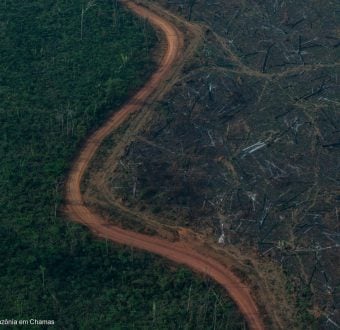The news this week that much of the Great Bear Rainforest will be protected once and for all was welcome and joyous indeed. It is the culmination of more than a decade of struggle and a point of personal reflection for me – and for countless others Greenpeace activists and campaigners worldwide, as well as across countless other environmental groups and individuals who gave it their all.

Mouth of Lockhart/Gordon Creek, Great Bear Rainforest, British Columbia, Canada. © Greenpeace / Phil Aikman
What began in 1995 on muddy logging roads in Clayoquot Sound on the Pacific Coast of Vancouver Island grew into a campaign that ultimately protected much of British Columbia’s coastal temperate rainforest – considered the rarest forest type on Earth. To my mind this campaign is the mother of all the Greenpeace forest campaigns that followed. This is where it all began for us. And if you look today at the forest leadership at the Rainforest Action Network, ForestEthics, the Sierra Club, the Natural Resources Defense Council, etc., and at the spectrum of Canadian environmental groups, many cut their teeth on this campaign.
When the coastal temperate rainforest campaign expanded from Clayoquot Sound in 1997 the larger area in question was known as the “Mid-Coast Timber Supply Area.” Lesson number one: No one wants to necessarily save the “Mid-Coast Timber Supply Area,” but “The Great Bear Rainforest” – now that’s something people can rally around. And thus, the name was changed… and it stuck.
The Great Bear Rainforest is where we discovered the power of “market campaigns,” the painstaking process of documenting the activities of logging companies in one region and exposing the often murky supply chains to end-consumers across the globe. In time, it is also where we honed our skills with landscape level planning and multi-stakeholder processes. We draw upon this experience today from the Amazon to the Russian Far East.
Let me tell you, it was a pain in the butt and friendships were strained and gained… But looking back today, all I can see is the result.
As the campaign progressed some took to calling it the “War in the Woods.” Logging companies sued us a number of times, naming both Greenpeace as well as individuals. At one point the B.C. Premier called Greenpeace an “enemy of British Columbia.” The stakes were indeed high. There were complex economic and cultural considerations to be negotiated. But this is an evolving ecosystem bypassed by the last ice age and thus home to some of the longest-lived forests in the world. Protecting the Great Bear Rainforest made those considerations worth navigating.
And, it all paid off in the end.
So what did we get? Five million acres (an area half the size of Switzerland) legally protected from logging; $120 million available to First Nation communities to help kick-start a new conservation economy; and a new system of “lighter touch” logging based on Ecosystem-based Management (EBM). Where logging is appropriate EBM will maintain 50 percent of the natural level of old growth forest in the region – that equals an additional 1.7 million acres of forest set aside from logging. And there’s more to it, like on-going, science-based collaborative planning and the development of a reserve network outside of formally protected areas.
Thanks to all of the people who made this possible, for your years of hard work and sacrifice. The world is a better place because of your efforts. While there is no rest for the weary, I’ll take just a moment today to reflect and raise my glass to you all.
(Also, you can check out an excellent post about saving GBR by Tamara Stark, communications director at Greenpeace UK, here.)

